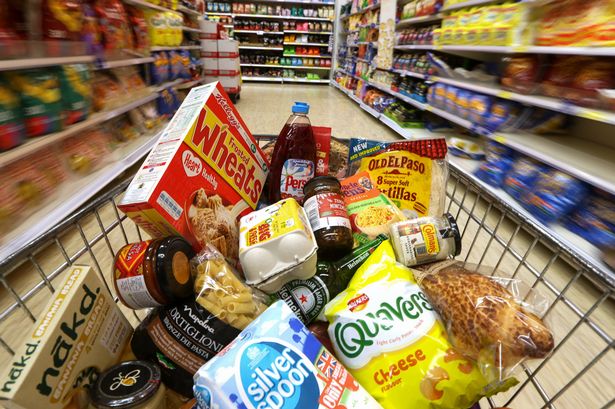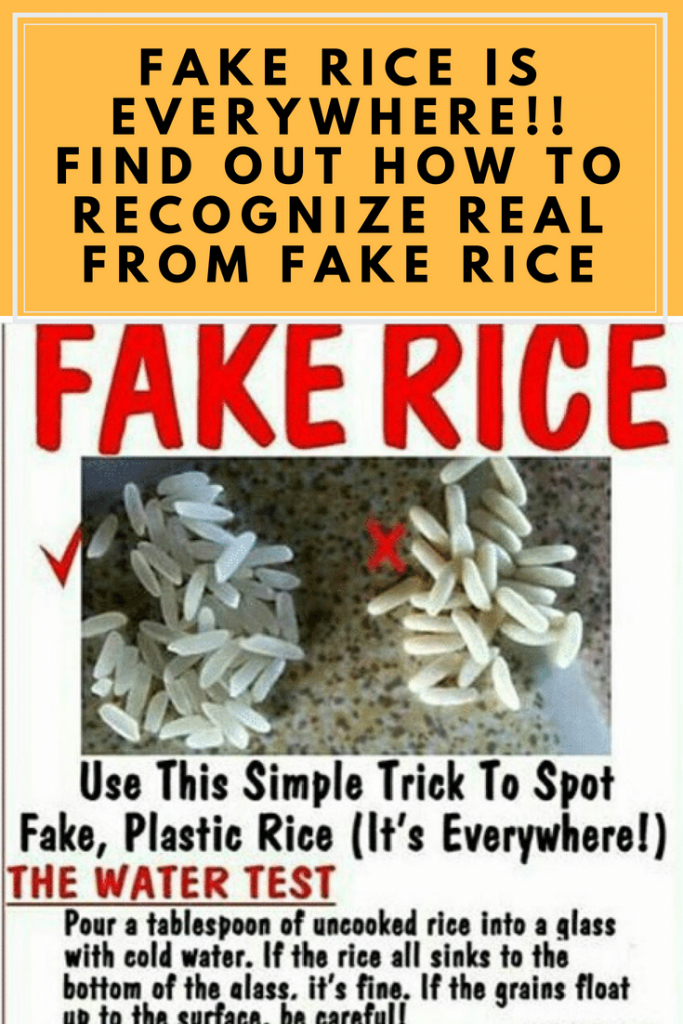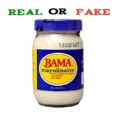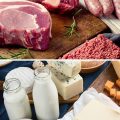Fake foods are highly processed foods including foods that mimic real food like “fake meat. Counterfeit food or “economically motivated adulteration” as it’s sometimes formally called is a real issue in grocery stores, restaurants, and online food stores everywhere because it is a very profitable illicit business with far reaching health consequences. Fake eggs produced in China were found to contain a lot of harmful ingredients such as benzoic acid, sodium alginate, and many others while it was also discovered that large amounts of fake noodles also produced in China were made with rotten grain and poisonous additives including plastic.
The Consumer Wellness Center in the US conducted a study of foods that supposedly contained blueberries and the results are pretty bad. Most of these foods didn’t contain anything like blueberries. It was a combination of starch, colorants, flavoring, and hydrogenated oil. A huge number of fakes exist because blueberries are considered to be superfoods and the demand is extremely high. The total amount of counterfeit goods in today’s market is valued at over $653 billion per year, and this is just in the United States excluding African countries like Nigeria were most of this products are dumped . Even the most regular food can be fake and you may be surprised by the quality of what you find in the package.
Data focused on the African continent is not as readily available, but what exists is alarming. Recent research by the Confederation of Tanzania Industries estimates that over 50% of all goods, including food, drugs and construction materials, imported into Tanzania are fake. Anecdotal evidence suggests that rates could be between 10% and 50%, depending on the food category and the country. According to an agro-processor and co-founder of Nigeria’s AACE Foods, supermarket shelves and open-air market stalls are too often stocked with counterfeit products. In Nigeria there is milk powder with no animal protein. In Kenya there is vegetable oil made of recycled oil unfit for human consumption.
In Ghana, the palm oil is laced with a food coloring called Sudan IV which is widely recognized as a carcinogen. In Uganda, formalin —an embalming agent—is used to keep meat and fish free from flies and seemingly fresh for days. Across Africa, there are incidences of plastic rice or nothing more than discarded rice chaff, packaged as high-grade rice, and corn powder dyed with Sudan IV, labeled as chili pepper. Given that most of the counterfeit products in Africa are staples consumed to fulfill daily dietary needs, they are likely contributing to the rising levels of malnutrition and cancer on the continent.
See: Health Benefits of Zobo Drink
How Fake Foods Affects Your Health
How fake foods affect health depends on several factors, including their relative importance within a person’s diet. Compared to real food, fake food has a low number of vital nutrients, like carbs, proteins, fats, vitamins, minerals, phytochemicals, carotenoids, and enzyme Q10 (CoQ10 or ubiquinone) per number of total calories. This is termed a foods’ nutrient density. Also, compared to real food, fake food usually consists of large amounts of saturated fat, salt, or sugar and low fiber content per number of total calories.
Specific nutritional characteristics of fake food that predispose to deficiencies and disease include the following:
Low fiber content – Soluble and insoluble fiber delay the intestines’ abilities to absorb nutrients and attenuates the rise in blood glucose and fructose absorption. This results in insulin reduction and reduces liver fat accumulation.
Low omega-3 (ω-3) fatty acid and elevated omega-6 (ω-6) fatty acid content – ω-3s are anti-inflammatory while ω-6s are pro-inflammatory; the ideal ω-6: ω-3 fatty acid ratio should be about 1:1 instead of the current 25:1, which encourages oxidative stress and cell damage.
Low micronutrient (vitamins, carotenoids, phytochemical) contents – Different vitamins, carotenoids, and phytochemical are important antioxidants that help prevent cellular damage.
Elevated trans-fat content – Trans-fats cannot be oxidized in the body and generate oxygen radicals. The USDA in 2013 declared that trans-fats are not “generally recognized as safe,” so they should not be in our food supply.
Elevated branched-chain amino acids (valine, leucine, and isoleucine) content – Predispose to fatty liver disease, when consumed in excess.
Elevated emulsifiers – Emulsifier detergents predispose to intestinal disease or food allergies.
Elevated nitrates – Found mostly in cured, packaged meat; they can predispose individuals to colon cancer.
Elevated salt (sodium chloride) content – In many salt-sensitive individuals (15 percent of the population) elevated salt intake predisposes to hypertension and cardiac disease.
Elevated fructose/sucrose (added sugars) – 74 percent of all processed items in supermarkets contain added sugar, mostly high-fructose corn syrup, that predisposes to type 2 diabetes, dyslipidemia, and nonalcoholic fatty liver disease.
The 5 Simple Ways To Detect Fake and Harmful Foods
Guide on How to Detect Fake Foods
Here’s a guide to common terms you’ll see on food packaging, as well as how to distinguish the facts from the flash.
“Real” fruits and vegetables. Many “made with real fruit” and “made with real vegetables” claims are deceptive. “Food manufacturers often use a misleading image of whole fruits and vegetables on their packaging when the product actually contains a very small amount. You need to look at the ingredients list to see what is really in the product, choose the real whole fruit or vegetable — no package needed, so no reading required.”
Made with whole grains. When shopping for breads, rolls, crackers, and other baked goods and snacks, don’t be fooled: “made with whole grains” isn’t the same as 100% whole grain. “You’ll see products that say 7-grain, 9-grain, or even 15-grain, but those products still may be mostly white flour. Again, check the ingredients list; the first word should be ‘whole,Enriched flour” and “enriched wheat flour” are not whole grains.
Contains fruit juice. Be aware that fruit drinks are not the same as fruit juice; they may contain small amounts of juice, but the rest is water, sugar, and other additives. “Avoid any fruit drinks that have added sugar, and limit your amount, even if it is 100% fruit juice. Since there’s no fiber in juice, it is digested quickly and can cause a rapid increase in blood sugar levels.
Low-fat and fat-free. The real issue with these terms is that low-fat and fat-free foods are not necessarily healthier than full-fat foods, and they often contain added sugar and salt.
“A low-fat diet does not mean it is healthier or helps with weight loss. People need to get past their fear of fat and understand that healthy fat is part of a healthy diet.”Peanut butter is a perfect example; you don’t need a reduced-fat version because the main type of fat in peanuts is healthy, unsaturated fat. The only ingredient in your peanut butter should be peanuts.”
Reduced sodium. This is another area where labeling can be deceptive. A “reduced-sodium” product must contain 25% less sodium than the regular version, but if the regular product is very high in sodium (for example, 800 mg of sodium per serving), the reduced-sodium version (600 mg per serving) may still be high in sodium. Another term to double-check is “no salt added,” a term allowed if no salt is added during processing; however, it doesn’t mean the food is sodium-free, or even low in sodium.
Gluten-free. If you do not have celiac disease or gluten sensitivity, there’s no reason to eat gluten-free foods. They are not necessarily healthier than foods that contain gluten, and sometimes they contain more added sugar, refined flour, salt, and other additives.
The key to healthy grains, whether or not they contain gluten, is choosing whole rather than refined grains.
Cholesterol-free. Food manufacturers use the term “cholesterol free” hoping that you will think the product must be healthy, but how much cholesterol you eat is no longer a primary concern, say health experts.
Research has shown that diets high in trans fat and saturated fat, more than diets high in dietary cholesterol, can raise blood levels of LDL cholesterol, the “bad” type that is linked with higher risks of heart attack, stroke, and cardiovascular disease.
Avoid being tricked
The easiest way to a healthy diet is to eat whole or minimally processed foods whenever possible. Make fresh fruits and vegetables, whole grains, lean proteins (fish, skinless poultry, eggs, beans), and vegetable oils (olive, canola, soybean, corn) the foundations of your eating plan.
When buying processed products, look at the Nutrition Facts label. Check the serving size, calories, saturated fat (not total fat), sodium, fiber, and sugar.
“These are the numbers that provide the most information about whether or not a food is healthy,” always look at the ingredients. “Buy products that have the fewest ingredients. Also, choose products that contain ingredients you recognize; if you don’t know what an ingredient is, chances are, it’s not healthy.
Share This Article via WhatsApp or Facebook You may be saving Lives by doing so







